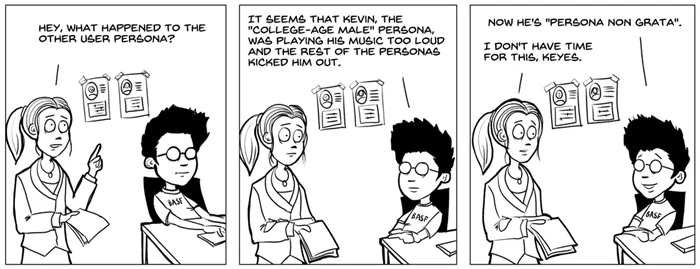Scrum and kanban are two widely used agile frameworks for managing projects. This article provides a detailed comparison of their strengths, differences, and best use cases to help teams determine the ideal method for their workflows. Both scrum and kanban focus on i
Agile Personas: Enhancing User-Centric Development in Agile Projects
Agile personas are a powerful tool that helps teams focus on real user needs. In this article, you'll learn how to create and use personas to make agile projects more effective and user-oriented. The article provides examples, best practices, and actionable tips for integrating agile personas into your workflows
Key takeaways
Agile personas make projects more user-centric.
Integrating personas into Agile workflows helps teams better understand their audience and needs.
Using Agile personas ensures the development of features that bring real value.
Understanding agile personas
Agile personas are hypothetical representations of users that improve the quality of development and enhance the user experience. They help teams view projects from the customer’s perspective, make informed decisions, and deliver value at every stage of development.
What are agile personas?
Agile personas are based on UX design principles. Each persona includes:
- Name (e.g., Maria, 32, a marketing specialist).
- Needs (e.g., to simplify performance reporting).
- Pain points (e.g., struggles with managing multiple projects simultaneously).
These representations are created using real data and research to help teams view the process from the user’s perspective.
Why are agile personas important?
Agile personas enable teams to:
- Deepen their understanding of the target audience.
- Align goals across team members.
- Speed up decision-making processes.
Example: A company used Agile personas to analyze the functionality of their CRM system. This approach identified user challenges and increased engagement by 25%.
How to create agile personas?
The process of creating Agile personas involves four steps:
- Audience Research: Conduct interviews, surveys, and data analysis.
- Segmentation: Identify key user groups.
- Profile Creation: Describe demographics, goals, pain points, and motivations.
- Documentation: Use cards, infographics, or online templates to visualize personas.
Best practices for integrating agile personas
- Planning: Use Agile personas to prioritize tasks during sprints.
- Visualization: Display persona profiles prominently to keep the team focused.
- Regular Updates: Revise personas to reflect changes in project dynamics.
- Testing: Link testing scenarios to Agile personas’ characteristics.

Learn more about flexible methodologies in the article "Top Benefits of Agile Methodology: Why Agile Drives Success in Project Management". Explore how Agile helps shape team structures in the article "Understanding Agile Team Structure: Roles and Responsibilities for Effective Collaboration". Read about approaches to creating workflows in the article "Workflow Templates: How to Optimize Processes for Maximum Efficiency".
Interesting fact 
Did you know? Harvey Ball, a UX designer in the 1970s, created one of the first well-known “personas” to simplify complex concepts. This methodological approach laid the groundwork for modern Agile personas, enabling teams to focus on end users effectively.
Conclusion
Agile personas empower teams to make projects truly user-oriented. By following the outlined steps and recommendations, you can create more valuable and functional solutions that meet your audience’s needs.
Recommended reading 

"The Inmates Are Running the Asylum"
Examines how poorly-designed technology products result from developers controlling design decisions instead of focusing on user needs and experience.
On Amazon
"Lean UX: Designing Great Products with Agile Teams"
Teaches product teams how to integrate user experience design with agile methods, focusing on rapid iteration and user feedback rather than deliverables.
On Amazon
"Agile Product Management with Scrum"
Shows product owners how to effectively create successful products using Scrum, with real examples of agile practices and solutions to common challenges.
On Amazon






